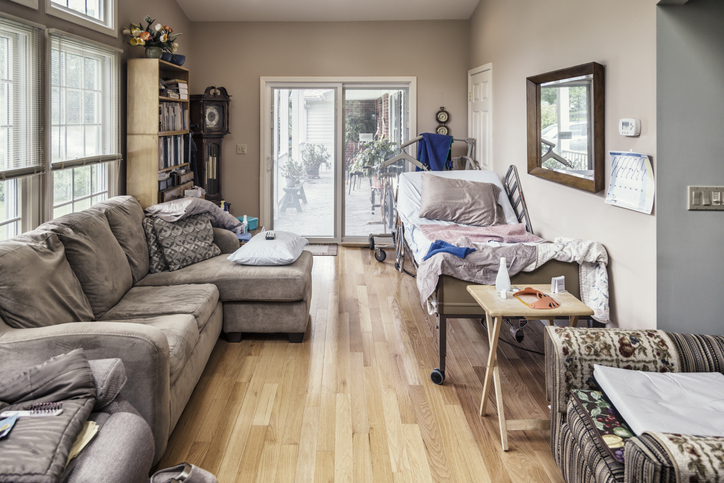Mass General Brigham wants to move 10% of its medical patients to the home, said Heather O’Sullivan, the health system’s president of healthcare at home, during an interview this month at HIMSS in Orlando.
“That’s just our starting point. There’s actually research out there that shows that 30-40% of all care provided in the U.S. today can be moved to the home, but that’s a bit more aggressive than what we’re ready to go to right now,” she stated.

With the Rise of AI, What IP Disputes in Healthcare Are Likely to Emerge?
Munck Wilson Mandala Partner Greg Howison shared his perspective on some of the legal ramifications around AI, IP, connected devices and the data they generate, in response to emailed questions.
Mass General Brigham provides at-home care through a mix of remote patient monitoring, meal services, virtual appointments and in-home clinician visits. O’Sullivan said that the health system’s biggest partner for its home care program is Best Buy.
The patients for whom Mass General Brigham provides at-home care typically have conditions like congestive heart failure, chronic obstructive pulmonary disease (COPD), pneumonia or sepsis, she explained. These types of conditions can often be managed “very safely” at home instead of a brick-and-mortar hospital setting, O’Sullivan noted.
“My belief is that the home will eventually be the default setting of care for a certain cohort of diagnoses, and our brick-and-mortar facilities will serve those with acute needs,” she remarked.
During the Covid-19 public health emergency, hospital-at-home programs saw both reimbursement and regulatory favorability, O’Sullivan pointed out. She called for CMS to extend coverage for hospital-at-home programs when the waiver is set to expire at the end of the year.
Amidst the pandemic, patients got “very comfortable” with virtual care and at-home care, even generations that previously were apprehensive. People are now more open than ever to care experiences that extend beyond traditional facility-based care, thanks to consumer demands for optionality and convenience, O’Sullivan declared.
“It really changes the paradigm,” she said. “We become guests in the patient’s home, versus the patient being the guest in a brick-and-mortar facility. Everybody talks about being patient-centric — there’s really no greater model of care for being patient-centric.”
Extension coverage for hospital-at-home programs would not only allow hospitals to offer patients a more comfortable healing environment, but it would also help alleviate some healthcare workers’ burnout, O’Sullivan added.
Many clinicians have found providing at-home care has enabled them to connect with patients in a deeper, more rewarding way. Improving healthcare workers’ job satisfaction is a major benefit of hospital-at-home programs that many people often overlook, she noted.
Photo: Willowpix, Getty Images















